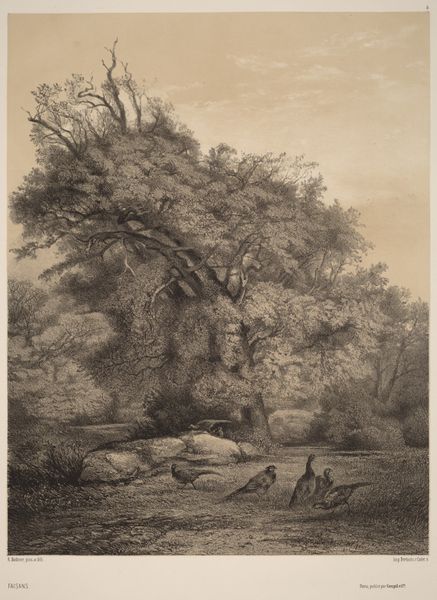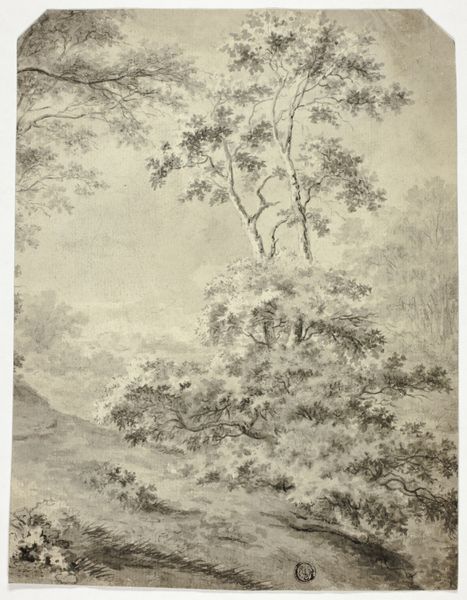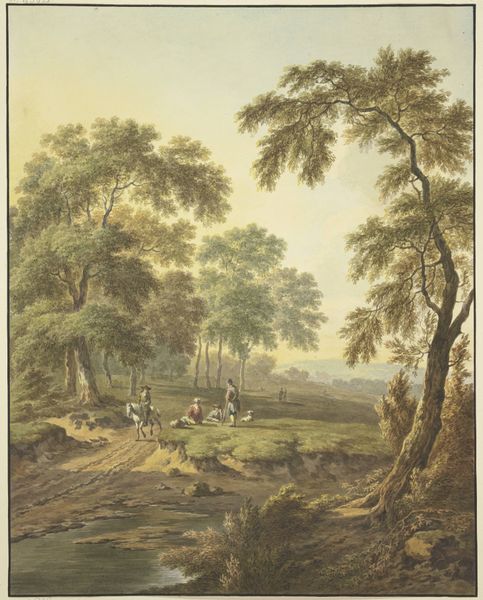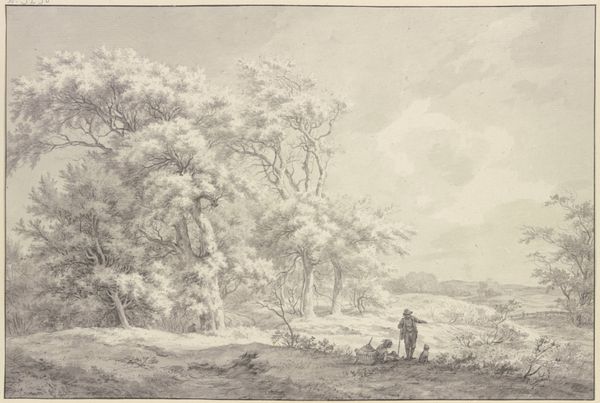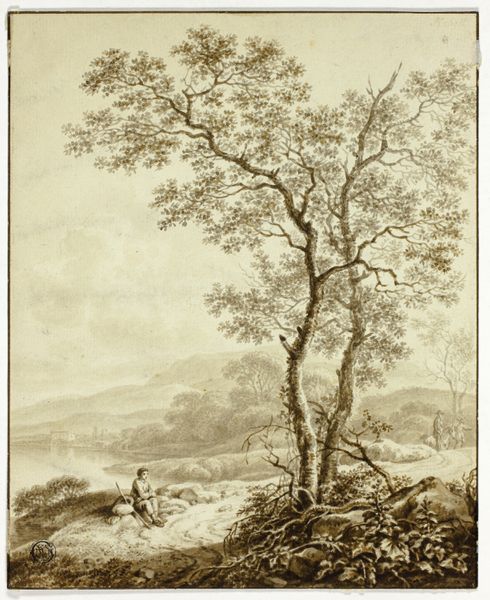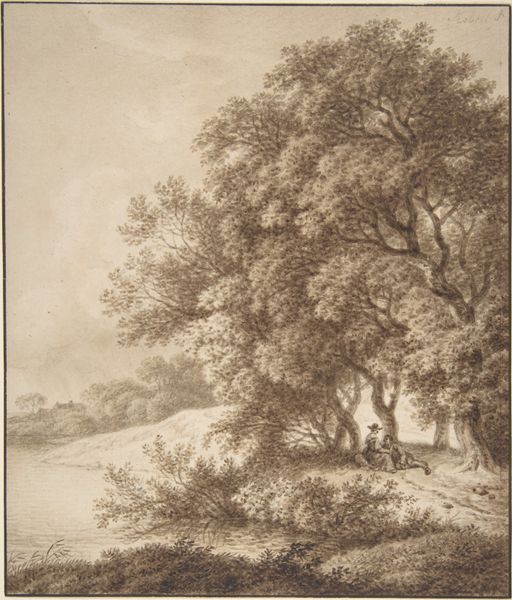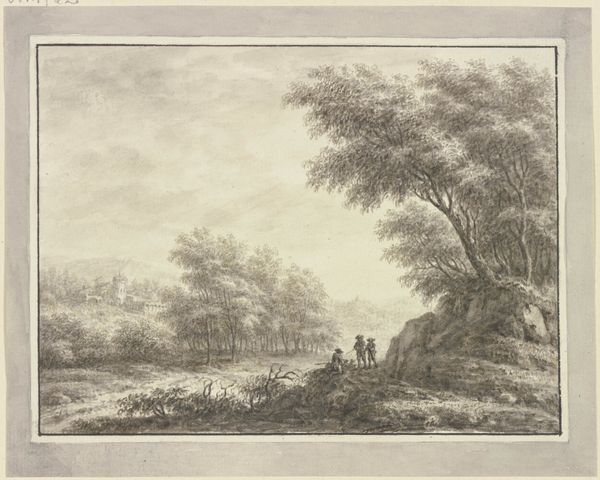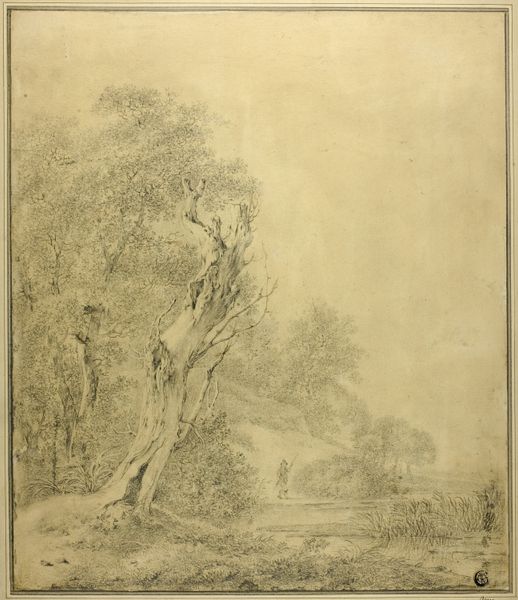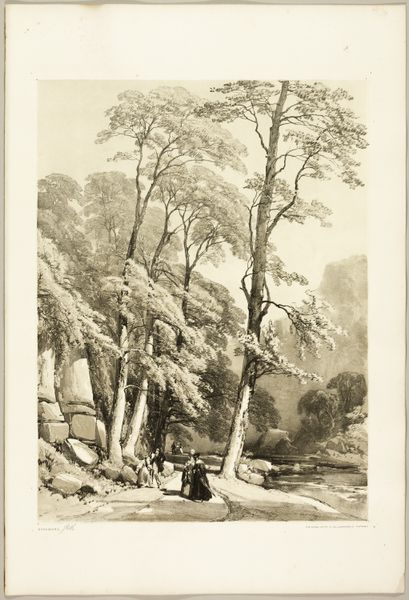
Gainsborough's first sight of the young lady who c. 1830
0:00
0:00
drawing, print, paper, watercolor, ink, pencil, chalk, graphite, pen
#
drawing
# print
#
pencil sketch
#
landscape
#
charcoal drawing
#
paper
#
watercolor
#
ink
#
romanticism
#
pencil
#
chalk
#
graphite
#
pen
#
watercolor
Dimensions: 417 × 315 mm
Copyright: Public Domain
Editor: So, here we have Samuel John Stump’s “Gainsborough’s first sight of the young lady who,” from around 1830, housed right here at the Art Institute of Chicago. It's rendered in pencil, ink and watercolor on paper. There's a delicate quality to it. It feels… dreamlike, almost. What do you see in it? Curator: Dreamlike is spot on! To me, it’s like stumbling upon a half-remembered story, a little vignette glimpsed through a misty lens. Consider the very idea Stump puts forth; it's a "first sight". Do you get a sense of that instant, that electric connection maybe, between Gainsborough and his subject? It’s a beautifully rendered "meet cute" of the Georgian era. What draws your eye in, compositionally? Editor: I'm struck by how Stump plays with light and shadow. It directs your gaze to the woman, with her sheep in tow. The way Gainsborough, presumably, is tucked away in the lower right, almost secondary, even though the title suggests he’s central. Is he really seeing her for the first time, or is it more… constructed? Curator: Aha! Exactly! I suspect the emphasis isn’t solely on biographical accuracy. I imagine it's Stump offering his interpretation of artistic inspiration. The light bathing the "young lady," it's as if nature herself is presenting her as *the* muse. Notice how Stump contrasts Gainsborough, firmly planted and earth-bound on his stool, with the floating light illuminating his subject! Is there an almost *voyeuristic* quality? Editor: Absolutely. Now that you point it out, the whole scene does have this feel of stolen observation, an almost cinematic first encounter! Curator: Precisely. Stump’s turned biography into artistic license and he shares the excitement and nervousness that maybe Gainsborough himself would have experienced. I leave with an elevated, Romantic understanding. What are you taking with you? Editor: That this piece is far more than just a record of a historical meeting. It's a meditation on seeing and being seen, interpreted by Stump as a story of a spark. And perhaps that’s art in a nutshell, right?
Comments
No comments
Be the first to comment and join the conversation on the ultimate creative platform.


